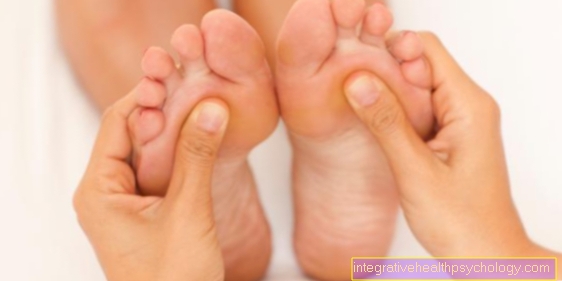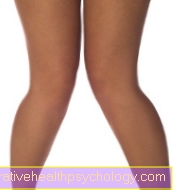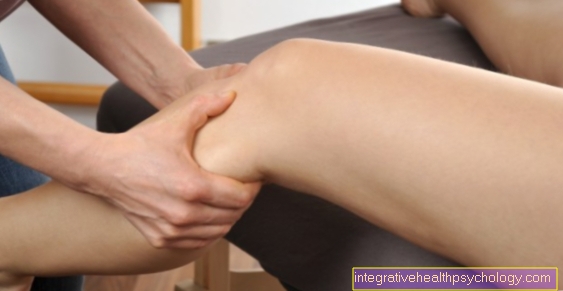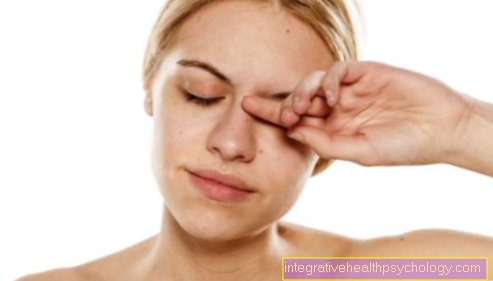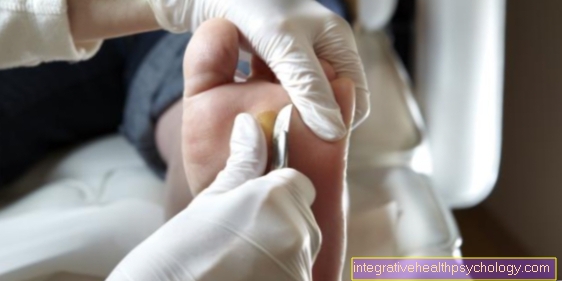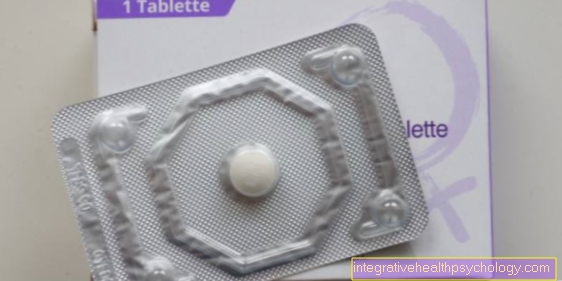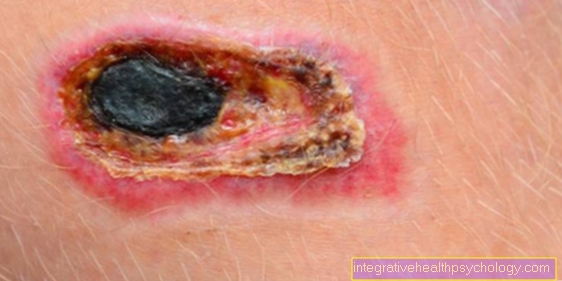Itchy rash
introduction
Itching is basically a meaningful phenomenon that has arisen in human tribal history. If there are foreign bodies on our skin or if we are stung by an insect, for example, itching can occur. We instinctively react to the itching by scratching. In doing so, we unconsciously try to remove the potential dangers affecting the skin from there.
An itchy rash, on the other hand, does not appear to be directly related to this protective mechanism at first glance. However, it basically triggers the same nerve stimuli as those caused by the causes described above. The result: itching of the skin, which is often perceived as very annoying or even tormenting and can severely impair the quality of life in the short or long term.
This makes it all the more important to know and recognize the causes of an itchy rash and to take suitable measures to provide relief.

causes
The reasons for an itchy rash are so numerous that it is not possible to describe all the causes. Some common causes are presented below. A visit to the doctor remains essential for diagnosis and treatment.
Sometimes there are clear triggers for an itchy rash, such as one infection, one allergy or one Autoimmune disease, where the Defense system directed against the body's own structures. In some people, an itchy rash in the form of a so-called itchy rash can even be caused by heat or cold, pressure on the skin, or sometimes even by mere contact with water Hives (Urticaria) to be triggered. Unfortunately, some causes can also remain in the dark.
More about the risk of infection: Is my rash contagious?
In the vast majority of cases of an itchy rash, however, there are harmless causes. Nonetheless, there are also forms of malignant neoplasms around the skin that can make themselves felt through these symptoms.
Common new causes in adults include allergic and drug reactions, eczema, psoriasis (psoriasis), Hives (Urticaria) by various triggers and infections by fungi, bacteria, viruses or parasites.
If an itchy rash occurs after the skin has been exposed to the sun for the first time in the year, it can be the so-called polymorphic light dermatosis, which is also known colloquially as a sun allergy. Strictly speaking, however, there is no allergic reaction to sunlight.
Eczema, which is inflamed, red areas of skin that is flaky, is a very large and important group when it comes to itchy rashes. The causes of eczema are extremely diverse. They range from dry skin, which is common in the elderly, to allergic reactions, defensive reactions of the skin against yeast, bacteria or toxins and others.
In psoriasis (psoriasis) a multifactorial origin is assumed. This means that various environmental and genetic factors interact here. The abnormal complexion is triggered by an inflammatory reaction in combination with increased cell division of the skin cells. This causes reddening of the skin and the scaling that gives it its name.
If an itchy rash comes on quickly, lichen ruber can be the trigger. The cause of the skin disease, also known as lichen planus, is not known. However, immune processes and genetic factors seem to be important for the development of the disease.
Also with the so-called rose lichen (Pityriasis rosea) no precise causes are known. The condition can cause an itchy rash that develops over weeks.
In principle, other causes can be bacterial, viral, skin infections caused by fungi or parasites.
A long-term skin reaction to an insect bite can also be a trigger.
Rarer causes are also autoimmune diseases and malignant changes in cells of the immune system, the so-called lymphocytes, which can cause an itchy rash.
Find out all about the topic here: Allergic reaction on the skin.
Rash on the face
Itchy rashes in the face can through a allergic reaction like for example on Care products arise.
It happens with one especially with women excessive grooming with creams, masks and other cosmetics for the so-called "stewardess disease" which in medical terminology as perioral dermatitis referred to as. This goes with itchy rash and drier, scaly skin hand in hand.
In addition, the so-called teething problems such as rubella, measles and Scarlet fever cause itchy rashes on the face. However, these rashes usually go with you general feeling of illness and fever hand in hand.
There is an itchy rash on the cheeks and forehead Neurodermatitis typical. The itching is often so severe that scratching causes open and weeping areas of the skin.
Also one psoriasis can cause an itchy rash on the face.
Acne often goes with one severe itching and can act like a rash. Often, pustules filled with pus also appear.
In rare cases, an itchy rash on the face will also appear with rheumatic diseases such as Lupus erythematosus triggered.
Symptoms
The symptoms of an itchy rash ultimately result from the term itself. Only the severity of the itch and the rash can be very different. In dermatology, rashes are differentiated according to various criteria. First of all, it is important where the rash occurs. Is this local (local) limits or occurs all over the body (generalized) on? The colloquial term “rash” must also be defined at this point. If it is a localized reddening, the phenomenon is called erythema, if the same skin symptoms are found over large areas or distributed over the whole body, it is called rash. Eczema is inflamed, reddened and flaky areas of skin.
The appearance of rashes is also important. So-called efflorescences, i.e. characteristic skin changes such as blisters, pustules or scales, characterize the different clinical pictures. The distinction is difficult for the layman. Furthermore, the course over time gives an indication of possible causes.
Despite all the difficulties, there are some characteristics typical for the respective disease that can give even the layperson an indication of what may be hidden behind the existing itchy rash.
For example, if this occurs after eating certain foods or medicines, it may be an allergic reaction. The same applies to the contact of all kinds of materials (e.g. jewelry, cosmetics, etc.) with the skin, which can trigger what is known as contact dermatitis. After a few days, itchy reddening and possibly blistering in the area of contact with the triggering substance.
Read more on this topic at:
- Contact dermatitis
- Rash in the genital area
If itchy skin changes appear a few days after the first contact with the sun in the year, one is suspected polymorphic photodermatosis ("Sun allergy"). The skin symptoms can look very different (polymorphic) from patient to patient. However, palpable skin changes are often found. In the same patient, however, the polymorphic photodermatosis always manifests itself in the same appearance.
More about this topic can be found: Rash from sun
The large group of Eczema has in common that the skin is reddened and flaky. It partially forms acutely Vesicles and the eczema can ooze.
The Urticaria (Hives) is a clinical picture with quite clear symptoms. Itchy, palpable skin changes with a red halo form, which disappear after minutes and can reappear elsewhere.
Of the Lichen Ruber (Nodular lichen) is characterized by palpable, flat, rapidly developing and severely itchy skin changes that are often whitish scales. Symmetrical involvement of both arms and / or legs is typical. Furthermore, new changes often develop on mechanically stressed skin. This is called Koebner phenomenon designated. Just wearing tight-fitting clothing can be enough to cause new nodules.
In the Pityriasis rosea Over a period of weeks, oval, reddish and scaly, well-defined skin appearances develop that are usually not very itchy.
The psoriasis (psoriasis) is a disease that progresses in relapses. In its classic form, red, flaky and itchy skin appears. Depending on the variant, you can also use pus Filled small, palpable changes in the skin (pustules) may be present, or the psoriasis may develop into a Joint inflammation (arthritis) express. Changes to fingernails and toenails can also be a symptom. The Koebner phenomenon is also typical for psoriasis, which means the deterioration of the disease due to mechanical stress on the skin.
Rash with pustules
Pustules are cavities located on the skin that are filled with pus. Therefore, pustules are also known as pus vesicles. The formation of these pus vesicles can have various reasons.
Pustules associated with an itchy rash can also appear with acne, for example. The backlog of sebum on the hair follicles causes inflammation and pustules.
Another way that you may experience an itchy rash and pustules is while shaving. Shaving can irritate and redden the skin and make it itchy. Since tiny wounds occur when you shave, bacteria on the skin can penetrate. These bacteria cause an infection in these areas of the skin, which manifests itself as pus pustules.
Read more on the topic: Skin itches after shaving
With chickenpox and shingles, in addition to an itchy rash, red pustules filled with clear fluid can also occur.
Fungi or parasites can also cause itchy rashes with pustules.
Read more on the topic: Rash with pustules
diagnosis
The most important means of making a diagnosis is the assessment and questioning of the patient by the Dermatologist. Often times, this alone can determine the cause of an itchy rash, without the need for further action. Depending on the clinical picture, however, further steps can follow.
This can be used if an allergic reaction is suspected Allergy test be useful on the skin. In addition, certain antibody in the blood, which are increased in allergies. This can possibly also be done with Eczema, or one Hives be useful if allergic involvement is suspected. If the results are unclear, or to confirm a suspicion of a specific skin disease, the dermatologist may ask for a small one Tissue sample to take. This so-called biopsy is a painless way to obtain tissue that can then be examined with the microscope. This enables both benign and malignant changes in the skin to be examined. If one is suspected infection the skin with bacteria, viruses, or fungi, are common Trade-offs taken to determine the causative pathogen and to align the subsequent therapy accordingly.
therapy

Treatment for an itchy rash depends largely on the cause of it. For example, if there is a suspicion of a allergy, so the suspicious substance should be avoided. Is it a drug, the attending physician should be informed immediately about the discontinuation of the drug and the suspicion of an allergic reaction in order to plan the further course of action.
Depending on the extent of the allergic reaction, it may be necessary for the doctor to take further steps. This can be done by an emergency medical practitioner Immediate treatment to therapy with drugs that suppress the allergic reaction (so-called Antihistamines), or Cortisone supplements pass.
The same treatment is given against one Hives (Urticaria) used.
At a Sun allergy (polymorphic photodermatosis) can Cortisone preparations and Antihistamines the inflammation inhibit the skin. Over time, however, the skin gets used to the sun, so that at most a temporary therapy is necessary.
Eczema are treated according to their cause. Often come here too Cortisone ointments used to relieve inflammation. Is a mushroom- or Bacterial contamination likely to be ointments or shampoos for fungus, disinfectant poultices, or Antibiotics applied. Known triggers of eczema should be avoided.
Of the Lichen Ruber (Nodular lichen) is a disease that can be healed. However, this can take up to several years. There come here too Cortisone preparations for use. Alternatives are other drugs that suppress the immune system and thus reduce inflammation. You can also Vitamin A supplements, or one UV light therapy be considered.
The Pityriasis rosea (Rose lichen) usually heals on its own within weeks. Mild cortisone ointments can also be used to support this.
Therapy is more difficult with the chronic one psoriasis. This is treated differently in individual cases depending on its severity. In mild cases, therapy is carried out locally with a cortisone ointment. In more severe cases, cortisone or other drugs that suppress the immune system must be taken as tablets. The therapy is often supplemented by UV light therapy. Other drugs like Vitamin A supplements, or special, targeted antibodies also play a role in therapy. However, the process of finding an individually effective treatment is often tedious. Skin care supports this.
If the exact cause cannot be found but the serious illnesses have been ruled out, one can try to relieve the symptoms and the rash with the help of herbal ingredients. They mostly have anti-inflammatory effects and care for the skin.
You can read more information on this topic here: Home remedies for a rash
Itchy rash in children
A itchy rash in children is often an accompanying symptom of infectious diseases such as Scarlet fever, Ringlet rubella or chickenpox.
Since the affected parts of the body and the appearance of the rash vary with the different infections, it can often be quickly identified which childhood disease is involved.
So educate at Scarlet fever many red dots rather large areas of red spots.
You can find more information on this topic at: Scarlet fever rash
At chickenpox can Pustules, Points, Crusts and vesicles appear at the same time. However, red spots are also found on the chickenpox and scarlet fever Oral mucosa.
The part of the body where the rash first appears provides information about the disease.
So starts at Ringlet rubella for example the rash on the face with a recess in the nose and mouth and then spreads over the whole body.
The so-called Teething problems What is in common is that they usually work with one itchy rash accompanied. Recurring, itchy rash in children can also indicate a Neurodermatitis or Allergy, for example, indicate clothing or detergent. In atopic dermatitis, the itchy rash often occurs in the hollow of the knee or the crook of the elbow.
Very rarely, rheumatic diseases can be responsible for an itchy rash. In any case, one should Consulted a doctor who examines and treats the affected skin areas.
forecast
The prognosis of the symptoms and the disease itself depends of course in each individual case on the triggering causes of the rash. It is important to consult a doctor if an itchy rash is very bothersome, the symptoms have not subsided after a few days, or if symptoms occur that do not affect the skin. This is important in order to diagnose even rare and serious diseases that may be hidden behind the symptoms.
Many diseases will resolve themselves in the foreseeable future or under therapy. The psoriasis however is a chronic diseasewhich, however, can take different degrees of severity. The aim of treatment is therefore to achieve a mild course. However, the drugs used, which suppress the immune system, can also make you more susceptible Infections and other diseases. This can then trigger further complications.
In rare cases, itchy rashes are caused by an Autoimmune disease, or caused by a malignant disease and can then take a life-threatening course. Fortunately, however, this represents a small minority of cases, so the prognosis is good in the vast majority of cases.
prophylaxis
Although this can be difficult with some substances in everyday life, the triggering substance should be avoided in the event of an allergy.
Basically, you should, as far as possible, rely on the Scratch should do without. On the one hand, this can cause minor injuries that can cause a skin infection, and on the other hand, it ultimately worsens itching even. At the Lichen Ruber and the psoriasis Scratching may also worsen the visible symptoms on the skin.
The so-called Sun allergy can possibly be prevented by slowly getting used to the sun.
Some Eczema can be prevented by skin care measures. The necessary measures differ depending on the cause. Consultation by a dermatologist can be useful to find the right care for your own skin.



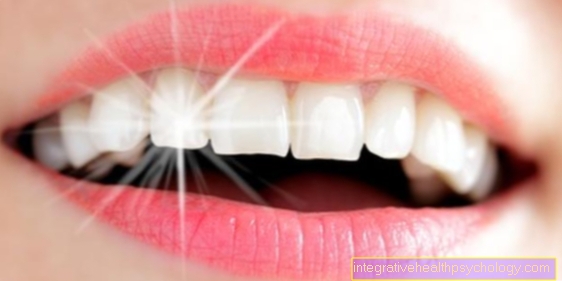

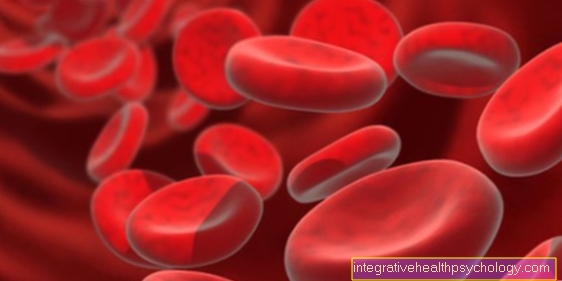
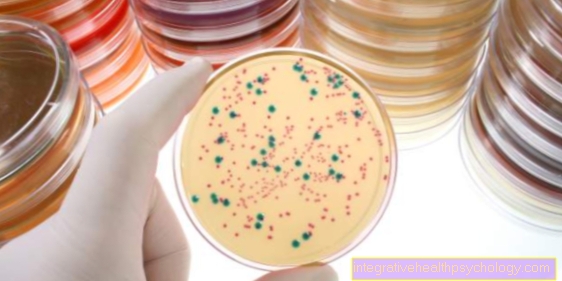


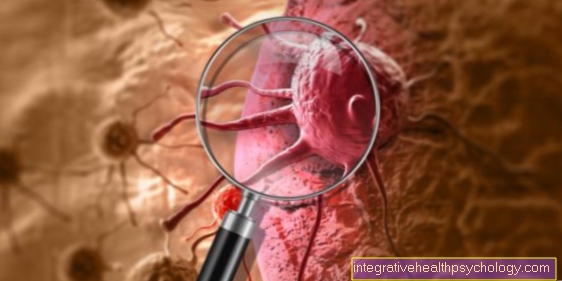



.jpg)
